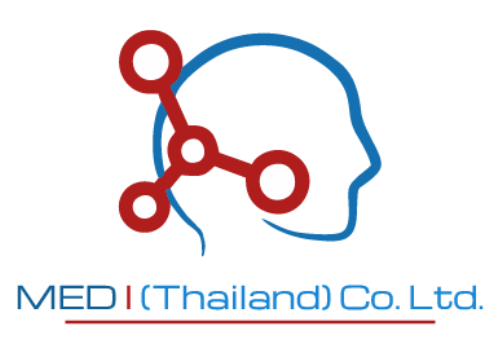Medical imaging has come a long way over the last few decades, but few innovations compare to the revolutionary power of PET-MRI scans.
This hybrid technology combines the strengths of two advanced imaging techniques—Positron Emission Tomography (PET) and Magnetic Resonance Imaging (MRI)—into a single, powerful tool. But what is a PET-MRI scan used for?
And why is it considered one of the most accurate and detailed imaging methods available today?
Understanding the Basics: What is a PET-MRI Scan?
A PET-MRI scan is a type of medical imaging that merges functional information from a PET scan with the anatomical detail of an MRI scan. While MRI shows detailed images of tissues, muscles, and organs, PET reveals how these tissues are functioning on a cellular level. When combined, they offer an in-depth view that no single imaging method can provide.
How Does PET-MRI Work?
PET-MRI scanners use a small amount of radioactive tracer injected into the body. The tracer highlights areas of high metabolic activity—often linked to diseases like cancer. At the same time, MRI uses magnetic fields and radio waves to create detailed images of internal structures.
Together, these two technologies provide both form and function. Doctors can see not only what the body looks like, but also how it behaves on a molecular level. This makes PET-MRI incredibly powerful for early diagnosis and treatment planning.
What is a PET-MRI Scan Used For?
This question lies at the heart of the technology’s growing popularity. So, what is a PET-MRI scan used for? Here are some key applications:
1. Cancer Detection and Monitoring
PET-MRI is widely used in oncology to:
- Detect tumors early
- Determine the aggressiveness of a tumor
- Monitor response to treatment
- Check for recurrence after therapy
PET-MRI scans are especially helpful in cancers of the brain, head and neck, liver, breast, and pelvis.
2. Neurological Disorders
Doctors use PET-MRI to understand and treat:
- Alzheimer’s disease
- Epilepsy
- Parkinson’s disease
- Brain tumors
The combination of detailed MRI images and PET’s metabolic data helps doctors pinpoint affected brain regions more accurately.
3. Cardiac Imaging
While not as common as in neurology and oncology, PET-MRI is gaining ground in cardiology. It helps evaluate:
- Myocardial perfusion
- Inflammation
- Scar tissue
- Blood flow and heart function
Benefits of PET-MRI Imaging
Now that you understand what a PET-MRI scan is used for, let’s explore the unique advantages of this advanced imaging method.
High Accuracy
PET-MRI provides exceptional image quality. Because it merges two advanced imaging techniques, the scan can detect even small abnormalities.
Reduced Radiation Exposure
Compared to PET-CT, PET-MRI exposes patients to significantly less radiation, making it safer for:
- Children
- Patients needing multiple scans
- Pregnant women (in certain conditions, with doctor consultation)
Better Soft Tissue Contrast
MRI is known for its high-quality soft tissue contrast. When combined with PET, it offers unmatched clarity for detecting abnormalities in:
- Brain
- Liver
- Pelvic organs
Streamlined Workflow
Instead of undergoing separate PET and MRI scans, patients get a single, comprehensive scan. This improves:
- Patient comfort
- Diagnostic speed
- Efficiency in treatment planning
PET-MRI Scan for Cancer Detection
One of the most critical uses of PET-MRI is in cancer diagnosis and management. When doctors ask, “What is a PET-MRI scan used for?”—cancer is often the top answer.
Detecting Tumors Early
Because PET identifies metabolic activity, it can spot cancerous growths even before structural changes appear on MRI. This allows for earlier diagnosis and better outcomes.
Tailoring Treatment Plans
PET-MRI helps oncologists choose the most effective therapies by understanding how tumors behave. This personalized approach leads to more targeted and less aggressive treatments.
Monitoring Progress
By comparing scans over time, doctors can determine how well a tumor responds to treatment. This helps in making adjustments as needed.
How Accurate is PET-MRI?
PET-MRI is one of the most precise imaging tools available. Its accuracy comes from the combination of:
- PET’s metabolic detection
- MRI’s structural detail
Together, they minimize false positives and negatives. This reduces the risk of unnecessary biopsies or missed diagnoses. In neurological and oncological cases, the scan’s precision is particularly valuable.
Factors That Boost Accuracy
- Use of advanced tracers
- Experienced radiologists
- High-quality machine calibration
- Patient preparation and positioning
Who Should Get a PET-MRI Scan?
While not suitable for everyone, certain patients benefit significantly from PET-MRI. Here are some examples:
Cancer Patients
- Newly diagnosed individuals
- Those under active treatment
- Patients in remission needing surveillance
Neurology Patients
- People with seizures or memory loss
- Patients with suspected brain tumors
- Those undergoing evaluation for neurodegenerative diseases
Pediatric Patients
- Children with cancer or brain disorders benefit from reduced radiation exposure and high detail
Medi Thailand and Advanced Imaging Solutions
Medi Thailand is at the forefront of bringing cutting-edge imaging technology to Southeast Asia. Providing radiopharmaceutical and theranostic solutions across the ASEAN market, Medi Thailand plays a key role in advancing diagnostic imaging and cancer care in the region.
With a strong focus on innovation and accessibility, the company is helping hospitals and clinics adopt high-quality PET-MRI and PET-CT solutions tailored to local healthcare needs. Their mission is to ensure that advanced molecular imaging becomes a standard part of patient care throughout the ASEAN region.
Conclusion: The Future of Imaging is Here
So, what is a PET-MRI scan used for? In short, it’s a groundbreaking tool for diagnosing and monitoring complex diseases, especially cancer and neurological disorders. With its unmatched accuracy, safety, and efficiency, PET-MRI is paving the way for more precise and personalized medicine.
If you or a loved one is facing a diagnosis that requires detailed imaging, talk to your healthcare provider about PET-MRI. It might just be the advanced solution you need.

